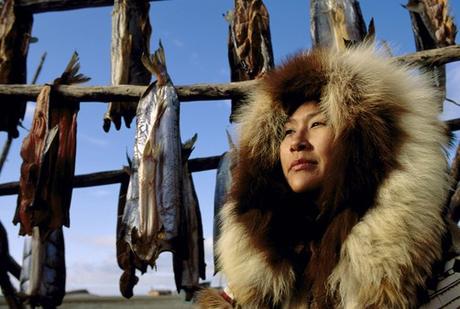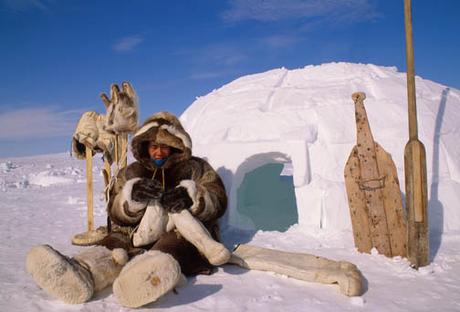Eskimos, popularly and interestingly called as snow men are unique group of people from rest of the world's population. They are unique in terms of their lifestyle. Although the name "Eskimo" is commonly used in Alaska to refer to all Inuit and Yupik people of the world, this name is considered derogatory in many other places because it was given by non-Inuit people and was said to mean "eater of raw meat.". A number of distinct groups, based on differences in patterns of resource exploitation, are commonly identified, including Siberian, St. Lawrence Island, Nunivak, Chugach, Nunamiut, North Alaskan, Mackenzie, Copper, Caribou, Netsilik, Iglulik, Baffinland, Labrador, Coastal Labrador, Polar, and East and West Greenland.

Since the 1970s Eskimo groups in Canada and Greenland have adopted the name Inuit, although the term has not taken hold in Alaska or Siberia. Eskimos are racially distinct from American Indians, and are not, as previously believed, merely "Indians transformed." In fact, the Eskimos are most closely related to the Mongolian peoples of eastern Asia. Eskimos consider themselves to be "Inuit" (The People). The Eskimo-Aleut languages are unrelated to any American Indian language groups. The Eskimo population was approximately 50,000 at the time of the first widespread contact with Europeans. An estimated 2,000 Siberian Eskimos lived near the Bering Strait, the Alaskan Eskimos numbered about 25,000, and the Central Eskimos (who inhabited what is now northern Canada) numbered about 10,000. The Labrador Eskimos totaled about 3,000, while the Greenland Eskimos totaled about 10,000. When you hear the word armor, you probably envision knights protected by steel. The ancient Inuit had no way to get their hands on steel, but they still needed protection from the elements and dangerous animals. Due to this, they crafted their own version of armor out of raw leather straps and bone plates, which was usually made from walrus teeth. This design was definitely ingenious, and it enabled the earliest Inuit people to survive many encounters that would have almost certainly been deadly otherwise.

When you live in an area that is mostly snowy, it becomes important to find easier forms of transportation than walking. Therefore, some of the early Inuit tribes were responsible for creating qamutiks, or dogsleds, and qajaqs, which are now known as kayaks. It was also common for larger groups of Inuit people to be transported across the water via umiaqs. The dogsleds were constructed from wood and whale bones, and the same materials were used to make their vessels. Now that you have a better understanding of the history that each modern Greenlandic Inuit tribe can trace its roots back to, you should be able to have a greater appreciation for the things that you see and the people you may encounter while participating in a South Greenland Viking Trails expedition. It is also worth noting that being able to offer cultural sensitivity will go a long way with the Inuit, especially those who are able to speak a more common language such as English.

Even if you opt not to sign up for any cruises that will enable you to spend a lot of time on Greenland's soil, it is still always a good idea to improve your knowledge of other cultures and history. Eskimos are very creative people. They excel in creating miniature arts like boats, animals, etc. They use animal skins in a number of ways to create artistic things. For example, masks, fancy clothing with animal fur, etc. Eskimos of the North Pacific Ocean area trace their history back more than 6,000 years. Some archaeologists think that about a thousand years ago Eskimos who had lived along the Bering Sea coast influenced these Eskimos on the Alaska Peninsula, North Pacific Ocean shore, and Kodiak Island. The ancient people are called Ocean Bay and Kachemak people. Whatever the details of recent influences on the descendants of the earliest-known Eskimos, these Eskimos on Kodiak Island became known as Koniags. Over time they had developed a language distinct from Yupik language called Alutiiq.
